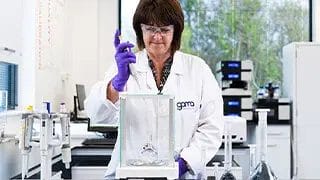Posted
15th October 2020
Research
A new review article in Clinical Infectious Diseases considers the role of contaminated surfaces in the transmission of the SARS-CoV-2 virus that causes COVID-19.
The review includes both laboratory studies evaluating the survival properties of the SARS-CoV-2 virus, and studies performed in clinical settings undertaking sampling for SARS CoV-2. The review concludes that although contact with respiratory droplets is the primary transmission route for SARS-CoV-2, the contaminated healthcare environment can potentially result in the transmission of SARS-CoV-2.
The review summarises evidence on the survival of the SARS-CoV-2 virus on dry surfaces in laboratory studies. Survival times depend on a number of factors, including the concentration of the inoculum, the suspending medium, the surface, temperature, and humidity. In general, SARS-CoV-2 and other coronavirus that infect humans can survive on dry surfaces for hours to days.
Most sampling for the SARS-CoV-2 virus in clinical settings have been conducted using PCR. Using PCR to sample environmental surfaces means that it isn’t possible to determine whether the virus is alive or dead. The rate of surfaces contaminated with SARS-CoV-2 varies considerably by setting to setting. So far, virus culture attempted from environmental surfaces from which SARS-CoV-2 has been detected by PCR in clinical settings has not grown culturable virus.
There is evidence that SARS-CoV-2 contamination of surfaces can be transferred to the hands of healthcare workers, and outbreaks of SARS-CoV-2 have been linked to environmental surface contamination. Therefore, despite recognition that respiratory droplets are the primary transmission route for SARS-CoV-2, healthcare agencies such as the WHO, CDC, ECDC, and PHE recommend enhanced disinfection of environmental surfaces during the management of COVID-19 in healthcare settings.
The healthcare environment is frequently contaminated with the SARS-CoV-2 virus during the management of COVID-19. The contribution of contaminated surfaces to transmission relative to other transmission routes is uncertain. However, what is clear is that cleaning and disinfection of the environment and shared patient care equipment with informed selection of effective disinfectants should be key components of strategies to manage COVID-19 in healthcare settings.
SHARE THIS ARTICLE
Tags
Latest News
GAMA Healthcare expands Rediroom fleet with additional order for Midlands Trust
GAMA Healthcare has secured an order for 8 more Redirooms,…
News from the front line: GAMA Healthcare partners with leading Midlands Trust to enhance air quality across two sites
GAMA Healthcare is pleased to announce a significant investment from…
Celebrating 20 Years of GAMA Healthcare: Our Story
This month, GAMA Healthcare celebrates 20 years of helping prevent…
Norovirus: Understanding its transmission and prevention in the UK
Introduction Norovirus is recognised as the leading cause of viral gastroenteritis…










